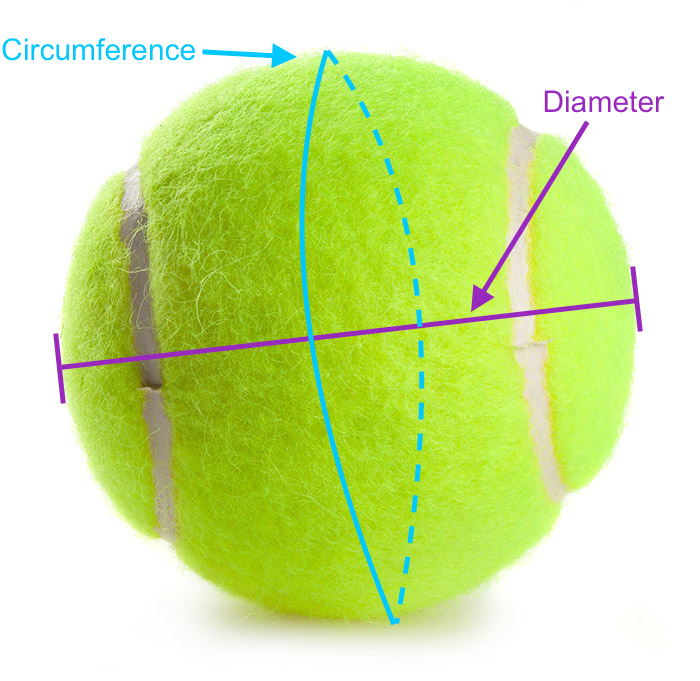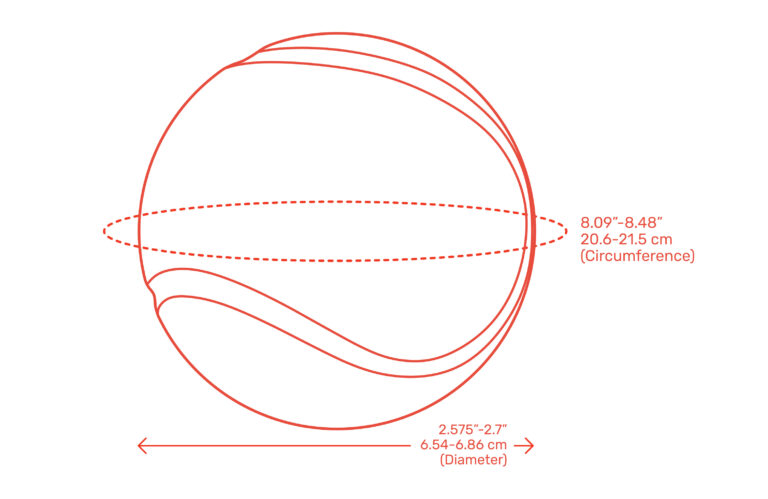Tennis is a game that fuses physicality and elegance and has secured worldwide appeal. While players participate in vast and complex strategies, knowing how big is a tennis ball is a fundamental but frequently ignored component of the game.
It is essential to determine how big a tennis ball is for tremendous tennis shots. For this purpose, you must ensure the proportions of this vital piece of equipment and shed light on its size and the science underlying its construction.

What is the Diameter of a Tennis Ball in Inches?
At first inspection, a tennis ball may appear to be a uniform item. However, some formalities have specified some proportions. To ensure uniformity in the game, the International Tennis Federation (ITF) has meticulously established the standard proportions of a tennis ball. A regulation tennis ball must have a diameter of 2.575 to 2.7 inches (6.54 to 6.86 cm).

The Core of the Matter: Inside a Tennis Ball
Understanding how big is a tennis ball extends beyond its outward dimensions. A tennis ball’s core, or center, is an essential factor that impacts its bounce and playability. The core is often constructed of rubber. It is crucial for the ball’s toughness and ability to maintain form throughout vigorous gaming.
The ITF also determines the rebound properties of a tennis ball. When dropped from 100 inches (254 cm), a regulation tennis ball should bounce back to a height of 53 to 58 inches (135 to 147 cm). This assures consistent and equitable performance on the court.
Felt Cover: Texture and Durability
One of the distinguishing characteristics of a tennis ball is its felt cover. This outer layer gives the ball its distinctive texture and contributes significantly to its aerodynamic properties. Felt is often produced from a blend of wool and nylon, which provides the optimum mix of durability and playability.
The felt on a tennis ball serves several roles. It influences the ball’s spin, grip on the court, and overall performance. The texture of the felt is intended to maximize the contact between the ball and the racket, adding another level of intricacy to the game.
Evolution of Tennis Ball Design
The design of a tennis ball has evolved significantly throughout time. Early tennis balls were constructed of leather and filled with various materials, including hair and wool. The switch to rubber cores represented a turning point, enhancing uniformity and durability.
Tennis Balls Across Surfaces
The surface on which tennis is played also affects the ball’s properties. For instance, clay courts delay the ball, forcing players to change their strategy. In contrast, grass courts provide quicker games with fewer bounces. Despite these variances, the standard size of a tennis ball is similar across all surfaces.
The Bottom Line
The question, ‘How big is a tennis ball?’ extends beyond an essential measurement. Tennis ball design is nuanced due to the painstakingly determined dimensions, core composition, and felt. As players compete in intense matches, the humble tennis ball quietly does its purpose, bouncing within the ITF-regulated dimensions. So, the next time you pick up a tennis ball, remember that its size is only the beginning of a narrative filled with science, accuracy, and a dash of athletic history.

